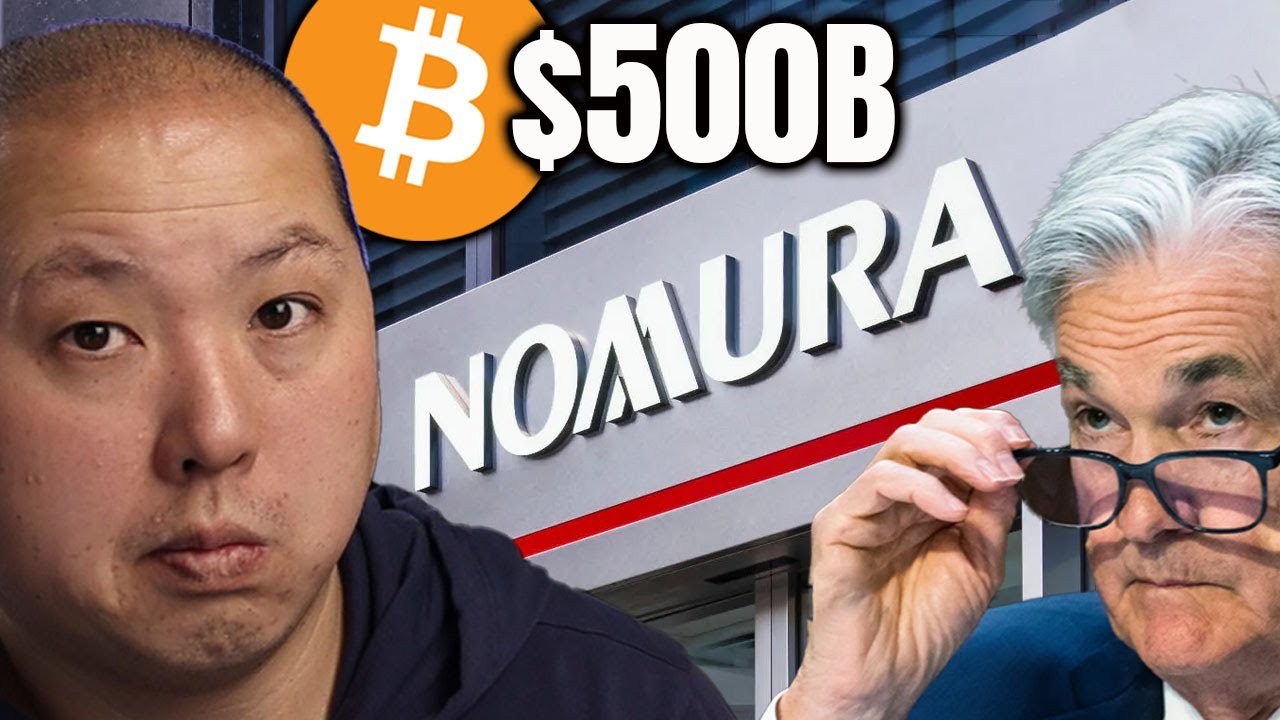I’m thrilled to share with you my latest blog post about the exciting entry of a $500B banking giant into the world of Bitcoin, just in time for the upcoming Federal Reserve meeting. As an enthusiast and follower of the digital currency revolution, this news has got me absolutely buzzing with anticipation. Join me as I delve into the implications and potential impact of this significant move, offering my insights and analysis on what it means for the future of finance. So, grab your favorite beverage and let’s dive right into this fascinating development together!
Introduction
In today’s fast-paced and evolving financial landscape, another banking giant is making its foray into the world of cryptocurrency. Nomura, a renowned financial institution with a staggering $500 billion in assets, has announced its entrance into Bitcoin. As the next Federal Open Market Committee (FOMC) meeting looms, the impact of this move on Bitcoin’s trajectory becomes an intriguing subject of speculation. In this article, I will delve into the significance of Nomura’s decision, explore the potential reaction of Bitcoin, and provide valuable insights for cryptocurrency enthusiasts. So grab a cup of coffee and let’s dive in!
The Quad-Factor and the Growing Institutional Interest in Bitcoin
Before we delve into Nomura’s recent announcement, it’s essential to understand the context that is driving the growing institutional interest in Bitcoin. The “quad-factor,” consisting of four influential elements, is playing a significant role in shaping this trend.
-
Inflationary Concerns: With the US market showing signs of green, the Federal Reserve faces the challenge of balancing economic growth and the risk of runaway inflation. The US GDP has been falling, while core inflation remains elevated, creating a precarious situation. In this uncertain environment, institutional investors are seeking alternative assets, such as Bitcoin, to hedge against potential inflation.
-
Monetary Policy and the FOMC Meeting: The next FOMC meeting is on the horizon, and all eyes are on the Federal Reserve’s stance. Will there be a rate hike, or will the Fed maintain a dovish or hawkish position? The market eagerly awaits these decisions, as they could have a profound impact on Bitcoin’s price movement.
-
Bitcoin Adoption Funds: Nomura’s announcement of a Bitcoin Adoption Fund specifically designed for institutional investors is a groundbreaking development. This move indicates the growing acceptance of Bitcoin as a legitimate investment vehicle and reflects the demand among traditional financial players to create avenues for exposure to cryptocurrencies.
-
Increased Institutional Interest: Nomura’s entrance into the Bitcoin market is just the latest example of a series of major institutions embracing cryptocurrencies. The likes of Tesla, MicroStrategy, and Square have already made substantial Bitcoin investments, setting a trend that others are eager to follow. This influx of institutional capital adds not only legitimacy but also stability to the cryptocurrency market.
The Impending FOMC Meeting and Bitcoin’s Reaction
As the upcoming FOMC meeting approaches, speculation is rife regarding Bitcoin’s potential reaction. Considering the current market dynamics and the aforementioned quad-factor, several scenarios could unfold.
-
No Rate Hike and Bullish Sentiment: Many analysts expect the Federal Reserve to maintain the current interest rates, given the fragile economic recovery. In such a scenario, a dovish stance from the Fed can be viewed as bullish for Bitcoin. The prospect of continued economic stimulus and low borrowing costs may drive investors towards Bitcoin as a store of value and hedge against inflation.
-
Rate Hike and Temporary Market Turbulence: While it is less likely, a surprise rate hike from the Federal Reserve could briefly disrupt the market equilibrium. Bitcoin, being a volatile asset, may experience a temporary price correction. However, with the growing institutional interest and widespread adoption, any market turbulence is expected to be short-lived.
-
Dovish or Hawkish Stance: Even if the Federal Reserve does not announce a rate hike, the manner in which the FOMC communicates its monetary policy can significantly impact the market sentiment. A dovish stance, emphasizing the need for continued economic support, can propel Bitcoin’s narrative as a desirable investment. Conversely, a hawkish stance, signaling concerns about inflation or economic overheating, may dampen Bitcoin’s short-term prospects.
The Ripple Effect: Potential Market Players in Bitcoin
Nomura’s entrance into the Bitcoin space raises the question of which other players might follow suit. The financial industry is witnessing a seismic shift in perception towards cryptocurrencies, and it is only a matter of time before more banking giants make their move. Bitcoin’s allure as a store of value and its potential for substantial returns are difficult to ignore. As a result, institutions are likely to explore ways to incorporate cryptocurrencies into their investment portfolios.
With each institutional player that enters the Bitcoin market, the level of acceptance and mainstream adoption of cryptocurrencies grows. This, in turn, leads to increased liquidity and stability within the cryptocurrency ecosystem, making it a more attractive option for both institutions and retail investors.
Conclusion
Nomura, a $500 billion banking giant, jumping into Bitcoin ahead of the FOMC meeting, is a significant development that underscores the growing institutional interest in cryptocurrencies. The quad-factor, consisting of inflationary concerns, monetary policy decisions, Bitcoin adoption funds, and increased institutional interest, is contributing to this trend. As the market eagerly awaits the outcome of the FOMC meeting, the impact on Bitcoin’s trajectory remains uncertain. Nevertheless, the growing acceptance of cryptocurrencies by major financial players like Nomura signals a new era of mainstream adoption. With each major institution embracing Bitcoin, the landscape becomes more conducive to long-term stability and growth.
FAQs
1. How does Nomura’s entrance into Bitcoin affect the cryptocurrency market?
Nomura’s entrance into Bitcoin adds legitimacy and stability to the cryptocurrency market. It signals the growing acceptance of cryptocurrencies by major financial institutions, attracting both institutional and retail investors.
2. Why are institutional investors showing increasing interest in Bitcoin?
Institutional investors are turning to Bitcoin as a hedge against inflation and alternative asset class. The uncertainty surrounding the US market and the risk of inflation are driving the demand for Bitcoin as a store of value.
3. How might the FOMC meeting impact Bitcoin’s price movement?
The FOMC meeting can impact Bitcoin’s price movement based on the Federal Reserve’s stance. A dovish stance could be bullish for Bitcoin, while a hawkish stance may temporarily dampen its short-term prospects.
4. What is the quad-factor influencing the growing institutional interest in Bitcoin?
The quad-factor consists of inflationary concerns, the FOMC meeting, the emergence of Bitcoin adoption funds, and increased institutional interest. These factors collectively contribute to the growing interest in Bitcoin among institutions.
5. Will more banking giants enter the Bitcoin market in the future?
It is highly likely that more banking giants will enter the Bitcoin market in the future. The growing acceptance and mainstream adoption of cryptocurrencies make it an attractive option for financial institutions looking to diversify their investment portfolios.




